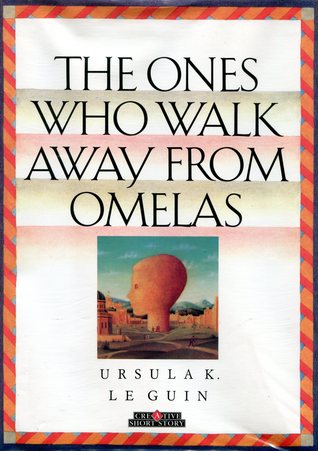Imagine you are in a situation where you have to kill one to save five and both the parties are innocent in a normal sense, what would you do? What would be the right thing to do? What does your moral tell you? Would it be ethical? Humans cannot answer these questions even after searching for centuries.
The book “The Ones Who Walk Away from Omelas” is based upon such an unanswerable paradox and the utilitarian concept that ‘any actions are right if they maximize social utility’. The whole human world runs on the principle of equivalent exchange. In order to gain something, something of equal value must be lost.
Let’s take a quick peek at the brief summary of the book in the following section.
The Ones Who Walk Away from Omelas PDF
The Ones Who Walk Away from OmelasBook Details
| Original Title | The Ones Who Walk Away from Omelas |
| Author | Ursula K. Le Guin |
| Edition Language | English |
| Publisher | Creative Education |
| Genre | Philosophical fiction |
| Pages | Hardcover, 32 pages |
| Size | 396 KB |
| Format | |
| Originally Published | April 1997 |
| First Published | October 1973 |
Summary
The story is set in the seaside city of Omelas, a prosperous city where all the citizens live happily. The story begins with the festivity of the first day of Summer. All the residents of the city are having an exciting time as they converge with each other in the Green Fields with children loitering around, music playing, and whatnot. The weather is also great, the clarity in the air, the green meadow fields, the clear blue sky mixed altogether set the perfect mood for celebration,
The writer suspects that the readers, at his point, are bound to think that Omelas is a city from any fairy tale because of the ‘archaic’ smiles on everyone’s faces. Then she questions the idea of being happy requires either simplicity or stupidity. She explains the people of Omelas as neither simple nor stupid, rather she explains them as ‘mature’ human beings who are living their lives to the fullest.
In this part, the writer desires her readers to believe the reality of Omelas as she is talking about real people rather than any fictional characters. By leaving the burden to construct Omelas on the own accords of the readers. The audience could implant subway trains, central heating systems, washing machines, and all other marvelous devices that are not invented in Omelas yet. The writer also suggests that Omelas could also have ‘orgy parties’, ‘drugs’ (that are not addictive), and any other things the readers seem fit. Overall, by doing this the writer portrays a magnanimous triumph of all members of society by a communion of fairest souls from everywhere.
The Secret
The writer briefly brings her readers back to the starting point of the story, the green field where the residents of Omelas were celebrating. The scenery, the mood of festivity, is too good to be true and the readers are not believing it, suspects the writer.
The writer unravels a shocking detail about Omelas, the secret of its magnificence. The key factor behind all that prosperity and happiness of Omelas depends on a neglected, physically and mentally stunted child who is locked in a small, dark cell. The child is treated as an object and “it” is aware of its misery and begs to be let out.
The child is never be released or even offered any kind words. The people of Omelas very well know that if they release the child, all the happiness, prosperity, and culture will disappear. The residents came to know about the child about eight or twelve years ago and they had difficulty coping with the situation. But eventually, proving the typical human nature, they get used to the idea. Because they realize that their happiness hinges on the child and it is the existence of the child that enables their architecture to be noble, their music to be poignant, and their science to be profound.
The narrator hopes that these vivid details made Omelas more credible to the readers and deliver the final detail about Omelas. The final detail explains that when young people visit the child, they make the decision not to return home. And the older people who lived for years with this information, sometimes, fall silent for a day or two and depart from their home and city entirely. They travel toward a mysterious place that according to the narrator, may not even exist. Despite this, she claims, “They seem to know where they are going, the ones who walk away from Omelas”
The Moral Dilemma
The moral dilemma displayed in the story is “Guilt”. Dilemma to choose between individual and collective happiness and also the guilt of having these two different options simultaneously.
The writer threw the fundamentally ethical question to her audience that ‘would they choose salvation of a poor soul from his misery over the happiness and prosperity of the whole city?’ the story also raises the question that if the concept of utilitarianism is right or not.
The story doesn’t have much of a plot rather it is based on a century-long paradox that ‘what is the right thing to do?’, or ‘what is right and wrong?’. The people who love philosophy will adore the book.
So, happy reading!








